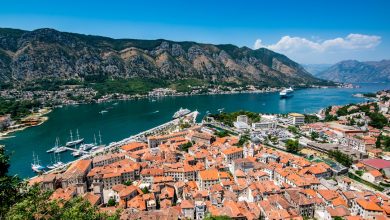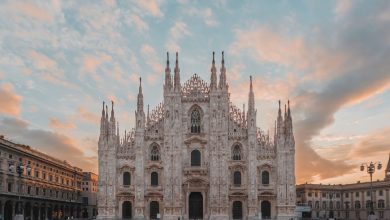
Embarking on a journey through Poland’s storied capital is to discover a city teeming with cultural riches and historic resilience. This Warsaw Travel Guide is your key to unlocking the must-see wonders of a vibrant metropolis where the past and present coexist in beautiful harmony. From the cobblestone charm of the Old Town to the modern pulse of its contemporary attractions, Warsaw invites travelers to explore its unique blend of tradition and innovation. Whether you’re strolling through the picturesque Royal Route or seeking the serenity of Lazienki Park, each step in this city tells a story of triumph, tradition, and tantalizing flavors. Join us as we delve into the very heart of Warsaw, a city that continues to rise, reinvent, and reveal its splendors to the world.
Exploring the Rich History of Warsaw’s Old Town
Warsaw’s Old Town, known as ‘Stare Miasto’, is a bustling mosaic of history, art, and architecture that provides an evocative glimpse into Poland’s storied past. A key highlight in any Warsaw travel guide, this area was meticulously rebuilt after the widespread destruction of World War II. Today, it stands as a testament to the city’s resilience and dedication to preservation.
When meandering through the cobblestone streets of the Old Town, you’ll encounter a series of landmarks that should not be missed:
- The Royal Castle: Once the residence of Polish monarchs, this castle has been restored to its former glory and now houses a museum rich with national artifacts.
- The Market Square: The heart of the Old Town, this bustling square is surrounded by colorful merchant houses and filled with street performers and outdoor cafés during the warmer months.
- Warsaw Mermaid Statue: The symbol of the city, this iconic statue is steeped in local legend and is a popular photo spot for visitors.
The charm of the Old Town extends to the intimacy of its scale. It’s quite manageable to explore on foot, allowing travelers to appreciate the intricate details of its reconstruction, which earned it a well-deserved UNESCO World Heritage status.
The Old Town also provides a wonderful base for cultural exploration, serving as a gateway to the numerous museums, churches, and galleries that offer further insight into Warsaw’s multifaceted history. A staple in any comprehensive Warsaw travel guide, the Old Town is a must-visit for history buffs and casual travelers alike who seek to understand the soul of the city.
For a deeper dive into the Old Town’s history, consider joining a guided tour, which can provide rich narratives and anecdotes that bring the streets and structures to life. Embarking on such a journey through Warsaw’s Old Town is like walking through the pages of a vivid history book, where every corner turned reveals another fascinating chapter of Poland’s capital.
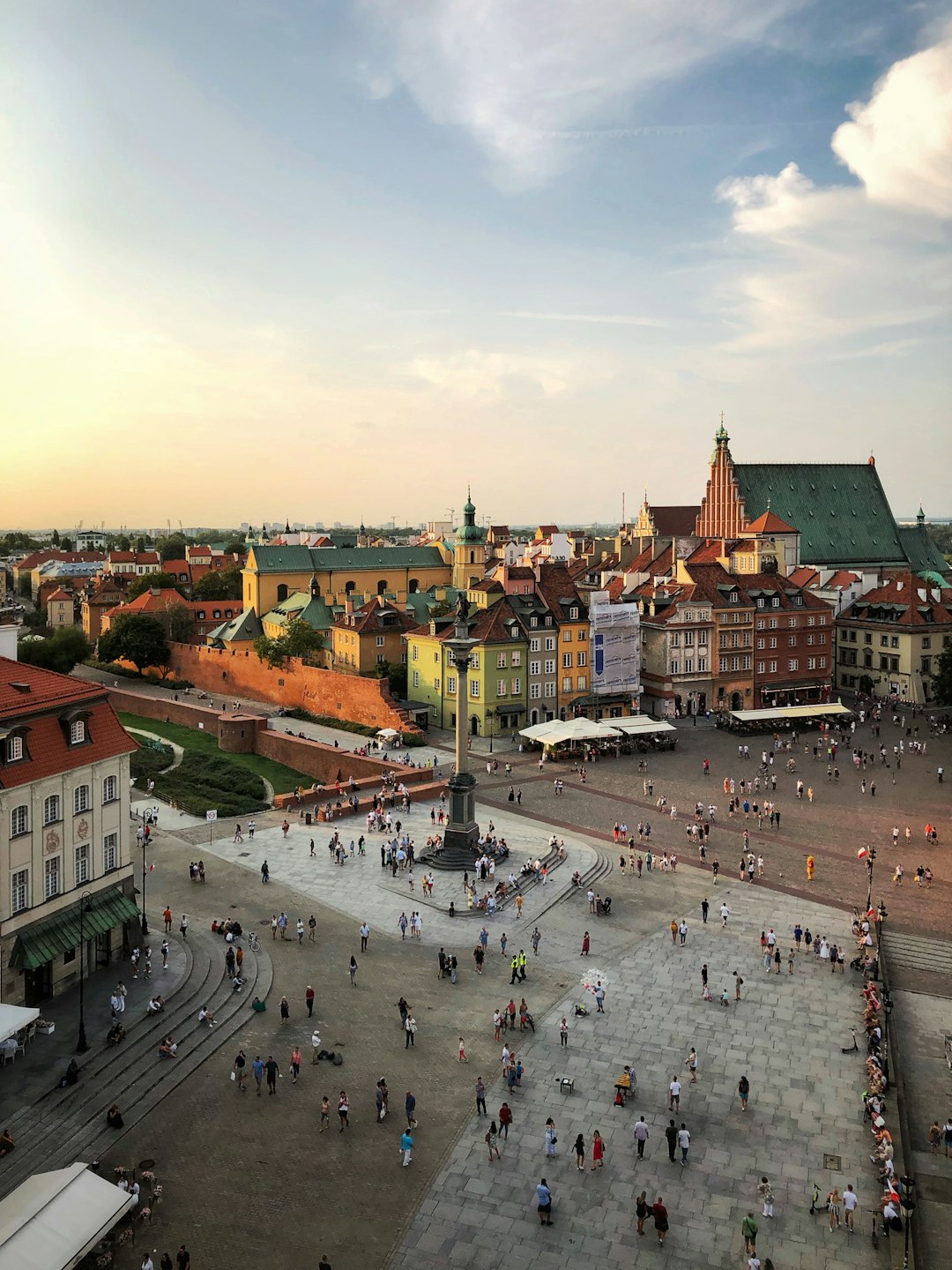
Discover the Royal Routes: A Path to Poland’s Monarchical Past
A visit to Warsaw would be incomplete without walking the Royal Route, the historical path that links three magnificent royal residences. This illustrious path presents a journey through time, offering a window into the grandeur of Poland’s royal history. As part of your Warsaw Travel Guide, let’s uncover the splendor of this regal trail.
The Royal Residences
- The Royal Castle: Begin your journey at the splendid Royal Castle, once the official residence of Polish monarchs. Its opulent rooms and stately court are testament to the majesty of Poland’s bygone eras.
- Lazienki Palace: Continue onwards to Lazienki Palace, an idyllic palace complex with gardens that invoke the leisurely ambiances once enjoyed by nobility.
- Wilanów Palace: Complete the route at Wilanów Palace, the “Polish Versailles,” surrounded by beautiful gardens and richly decorated interiors.
Experiencing the Route
On your walk, you’ll be treated to a visual feast of architectural wonders dating back to the 17th and 18th centuries. The route is not just a series of landmarks; it’s a tale of the city’s phoenix-like rebirth, having been carefully reconstructed after its destruction during World War II.
Meanwhile, Don’t Miss:
- The rich variety of churches and palazzos along the route.
- The Presidential Palace, where visitors can observe the changing of the guard.
- The statue of Copernicus, a nod to Poland’s contribution to the scientific world.
In this segment of your Warsaw Travel Guide, remember that the Royal Route isn’t simply a road, but a journey. Each step peels back a layer of history, revealing the culture, tradition, and resilience of Warsaw. Don’t rush—allow the echoes of royal processions and the whispers of historical figures to accompany you as you traverse this path to Poland’s monarchical past.
The Resilience of Warsaw: A Visit to the Warsaw Uprising Museum
Exploring Warsaw through its historical lens? Then, a compelling stop in your Warsaw Travel Guide must include the Warsaw Uprising Museum. This museum is not merely a collection of artifacts; it is a profound homage to the bravery and resilience of the Polish people during World War II’s darkest days.
Inside the museum, you will find:
- Personal Accounts and Testimonies: Hear the gripping stories of survivors and fighters, bringing the past to life.
- Interactive Exhibits: Engage with the history through authentic exhibits that feature original documents, photographs, and personal items from the uprising.
- Memorial Wall of Remembrance: Pay respects at the wall that lists the names of thousands who sacrificed their lives for freedom.
This visit is a deeply moving experience, one that showcases the indomitable spirit of Warsaw’s residents. The exhibitions are educational and emotionally resonant, characterized by an informative narrative that captures the heart of a visitor. Moreover, the museum serves not only as a memorial but also as a reminder of what it means to stand defiant in the face of oppression.
Perhaps one of the most mesmerizing features is the museum’s “City of Ruins” film, which graphically illustrates Warsaw’s devastation and the monumental task of rebuilding the city post-uprising. Wander through reconstructed fighter bunkers and communications posts, and let the somber atmosphere transport you to the 1940s Warsaw.
Fitting the museum into your Warsaw Travel Guide is essential to understand the city’s turbulent past and its triumphant journey to becoming the vibrant, modern capital it is today. Here are key points to remember:
- Location: Located in the city’s Wola district, it is easily accessible by public transport.
- Hours of Operation: Check current opening times as they can vary, but typically the museum is closed on Tuesdays.
- Admission Fees: Reasonable entrance fees, with concessions and free entry on certain days.
Visiting the Warsaw Uprising Museum is more than a historical detour; it is a chance to witness and honor the resilience that shapes Warsaw’s identity, an absolute must for any comprehensive Warsaw Travel Guide.
Warsaw’s Green Escapes: Lazienki Park and Beyond
When visiting Warsaw, taking some time to experience the lush greenery and tranquil spaces the city offers is essential. A Warsaw travel guide is incomplete without mentioning the beautiful retreats nestled in the heart of Poland’s bustling capital.
Lazienki Park, the crown jewel of Warsaw’s green escapes, stretches over 76 hectares in the city center and is a perfect harmony of nature and art. Here’s a snapshot of what this picturesque park offers:
- Palace on the Isle: The park’s centerpiece, an exquisite example of neoclassical architecture.
- Chopin Monument: Where free piano concerts fill the air with music every Sunday during the summer.
- The Orangery: Home to exotic plants and the occasional classical music concert.
Apart from Lazienki Park, Warsaw houses several other green spaces that promise a serene getaway:
- Saxon Garden: As the oldest public park in Warsaw, it’s a place of historic significance with a classic baroque layout.
- Royal Baths Park: Renowned for its palaces, sculptures, and water features, it’s a manifestation of pristine landscape design.
- Kampinos National Park: A bit further afield, this UNESCO-protected biosphere reserve offers dense forests and diverse wildlife.
These pockets of nature are not just for relaxation but also provide insightful glimpses into Poland’s cultural heritage. When crafting your Warsaw travel guide, these green havens are a must-include for visitors seeking a peaceful respite from the city’s dynamic urban landscape.
Remember to equip yourselves with a map of the park’s vast expanses or download a digital version—most Warsaw travel guide resources offer one. The sheer size of these parks means that there’s always a new path to explore or a hidden statue to discover, making each visit unique. Whether you’re picnicking by a serene pond, taking in a history-enriched stroll, or simply basking in nature’s embrace, Warsaw’s parks are an unmissable slice of paradise amidst the urban excitement.
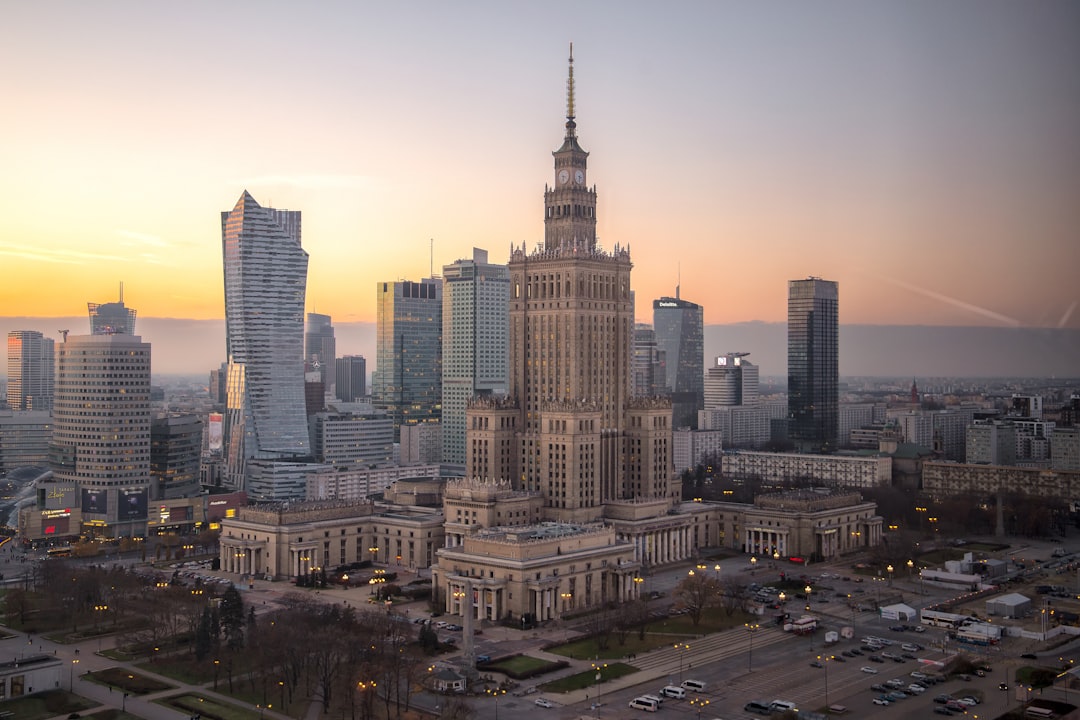
A Glimpse into Polish Culture at the Chopin Museum and Wilanów Palace
Delving into the heart of Polish culture becomes a journey back in time when visiting the iconic Chopin Museum and the majestic Wilanów Palace. These historical treasures are essentials in any Warsaw Travel Guide and provide a window into the nation’s artistic legacy and aristocratic past.
Chopin Museum:
The Frederic Chopin Museum, nestled within the Baroque Ostrogski Castle, offers a deep exploration of the composer’s life and works. Here’s why it’s a must-visit:
- Immersive Exhibits: Interactive displays and original manuscripts give insight into Chopin’s musical genius.
- Intimate Recitals: Regularly scheduled piano performances breathe life into the museum experience.
- Multimedia Approach: The museum employs cutting-edge technology to engage visitors of all ages.
Wilanów Palace:
The baroque splendor of Wilanów Palace extends a direct line to Poland’s monarchical heritage. Highlights include:
- Royal Residences: Marvel at the richly decorated apartments once inhabited by Polish kings and queens.
- Gardens & Grounds: Explore the sprawling gardens, a testament to the country’s love for refined outdoor spaces.
- Art Collections: Delve into a diverse collection of Polish and European art, offering a feast for the eyes.
Both institutions stand as pillars of Warsaw’s dedication to preserving its cultural identity. A visit to each is akin to peeling back layers of history to reveal the very soul of Poland.
In weaving these experiences into your Warsaw Travel Guide, you partake in a narrative that stretches beyond mere sightseeing; you embrace the spirit of a country that has skillfully interwoven the threads of tradition and modernity. Whether a lover of classical music or seeker of historical insights, these venues offer an unparalleled voyage into Polish cultural essence.
The Modern Face of Warsaw: A Guide to Contemporary Attractions
While Warsaw’s historical tapestry draws many to its storied streets, the city’s modern attractions showcase a vibrant, forward-thinking capital bustling with contemporary art, architecture, and culture. Our Warsaw Travel Guide would not be complete without exploring the modern face of this dynamic city. Here are some must-visit contemporary attractions that encapsulate the spirit of modern Warsaw:
- The Copernicus Science Centre: Ignite your curiosity at this cutting-edge science museum where interactive exhibits bring the wonders of science to life in engaging ways.
- Warsaw Spire: Stand at the base of this towering monument to modern architecture and marvel at its sleek design. This complex, which includes Plac Europejski, is a popular meeting spot filled with restaurants and often features outdoor exhibitions or events.
- The Neon Museum: Take a colorful journey into the art of neon sign making, an emblematic craft of the city that harks back to the Cold War era but still adds a luminescent charm to Warsaw’s nightlife.
- POLIN Museum of the History of Polish Jews: Although it’s rooted in history, the museum’s award-winning architecture and innovative multimedia narration provide a fresh perspective on the thousand-year history of Jews in Poland.
- Zlote Tarasy (Golden Terraces): For a combination of entertainment, shopping, and dining with a futuristic flair, head over to this ultramodern commercial complex. Its undulating glass roof is a wonder to behold.
To help visitors grasp the scale of Warsaw’s modernity, here’s a quick comparison:
| Contemporary Attraction | Activity Type | Notable Feature |
|---|---|---|
| Copernicus Science Centre | Education & Fun | Hands-on Exhibits |
| Warsaw Spire | Architecture & Leisure | Skyscraper with a plaza |
| Neon Museum | Cultural Experience | Retro Neon Signage |
| POLIN Museum | History & Culture | Multimedia Storytelling |
| Zlote Tarasy | Shopping & Entertainment | Iconic Roof Design |
In planning your itinerary, weave these attractions into your Warsaw travel guide to experience the city’s full spectrum—from the echoes of the past to the pulse of the present. Whether you’re indulging in the whims of science or shopping under the gleaming terraces, Warsaw beckons with its contemporary embrace.
Savoring Warsaw’s Culinary Delights: From Pierogi to Fine Dining
When it comes to tantalizing your taste buds, Warsaw does not disappoint. A key chapter in any Warsaw travel guide is the exploration of its diverse gastronomic scene that ranges from traditional Polish dishes to international haute cuisine. Here’s a glimpse into the culinary treasures that await in Poland’s vibrant capital.
- Polish Traditional Fare:
- Pierogi: These stuffed dumplings are a Polish staple, with a variety of fillings including meat, cheese, and vegetables.
- Bigos: Often termed as the national dish, this hearty stew made of sauerkraut and meat simmer is a must-try.
- Żurek: This sour rye soup often served in a bread bowl, combines the tangy flavors of fermented rye with savory sausage.
Indulging in these traditional dishes gives visitors a delicious insight into Poland’s cultural heritage and is an essential experience of any Warsaw travel guide.
- Fine Dining Establishments:
- Warsaw also boasts an array of fine dining restaurants where the culinary arts are taken to sophisticated heights. These venues often blend modern techniques with traditional Polish flavors, creating a feast not only for the palate but also for the eyes.
Here’s a snapshot highlighting the contrast between traditional and fine dining in Warsaw:
| Traditional Polish Eateries | Fine Dining Restaurants |
|---|---|
| Cozy, homelike atmosphere | Elegant, modern interiors |
| Hearty, comfort food | Innovative, artful presentations |
| Affordable prices | Premium pricing for upscale fare |
| Focus on local, seasonal produce | Use of exotic ingredients |
Regardless of your choice, each culinary adventure in Warsaw presents an opportunity to savor the rich tapestry of flavors that Poland’s capital has to offer. Whether sampling pierogi at a bustling milk bar or toasting with a glass of fine wine at a Michelin-starred bistro, your Warsaw travel guide to the city’s food scene will lead you through a memorable journey of tastes and aromas.
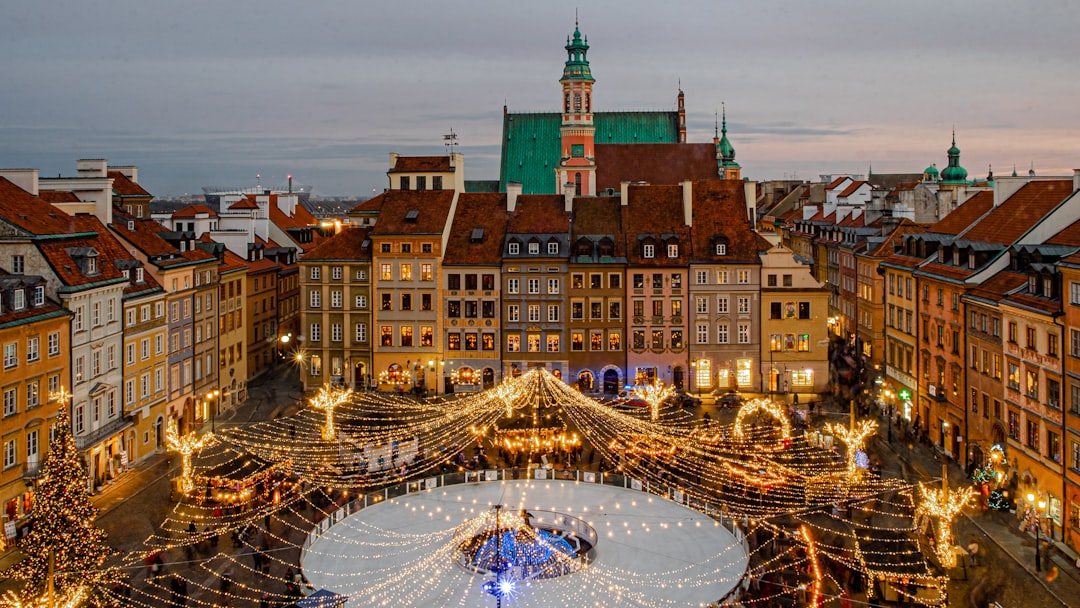
Navigating Warsaw: Tips for Getting Around the City Efficiently
Traveling around Warsaw can be a breeze if you’re equipped with the right know-how. This section of our Warsaw Travel Guide offers you crucial tips to navigate Warsaw’s transportation system efficiently, ensuring a smoother experience as you explore this vibrant city.
Understand the Public Transport System
- Buses and Trams: Warsaw’s extensive network of buses and trams covers the entire city. It’s advisable to use a transport app or the official website to check routes and schedules.
- Metro: The metro is the quickest way to get around Warsaw. There are two lines – M1 and M2 – that intersect at Świętokrzyska station, making it easy to transfer.
- Tickets: Purchase tickets from kiosks, ticket machines, or directly on some buses and trams with a card. Remember to validate your ticket once on board to avoid fines.
Opt for a Warsaw Pass
- A Warsaw Pass offers unlimited travel for a set period (24, 48, or 72 hours) and can be a cost-effective option if you’re planning to use public transport frequently during your stay.
Taxi or Ride-Sharing Services
- For direct travel, consider taxis or ride-sharing services like Uber or Bolt. These can be especially handy for late-night travel when public transport might be less frequent.
Biking in the City
- Warsaw is becoming more bike-friendly with designated lanes and the Veturilo bike-sharing system. It’s a healthy and enjoyable way to see the city, particularly in good weather.
Walking is Wonderful
- Finally, don’t underestimate walking. Warsaw’s central areas are perfect for exploring on foot, providing a closer look at the city’s charm and architecture.
By familiarizing yourself with these transportation options, you’ll navigate Warsaw with ease and confidence. Remember, an efficient travel plan is a key part of any successful Warsaw Travel Guide itinerary, allowing you more time to immerse yourself in the city’s rich heritage and dynamic present.
Shopping and Souvenirs in Warsaw: What to Bring Back Home
When your Warsaw journey draws to a close, you’ll want to bring back more than just memories. Warsaw is a treasure trove of unique souvenirs and Polish keepsakes that will keep the spirit of your adventure alive long after you return home. Beneath the city’s bustling modernity, there’s a rich tapestry of tradition perfect for exploring through its marketplaces and shops. Here’s what to look for in this Warsaw Travel Guide segment dedicated to shopping:
- Amber Jewelry: Often referred to as the gold of the north, amber is a classic Polish gemstone. Its warm golden hues make it a perfect keepsake, available in a variety of jewelry pieces from sophisticated necklaces to quaint earrings.
- Pottery and Glassware: Polish pottery, with its intricate hand-painted designs, is famous for its durability and timeless style. Glassware, too, is a reflection of Poland’s artisanal heritage — look for beautifully crafted crystal pieces.
- Warsaw Memorabilia: For something specifically from the capital, seek out Warsaw-themed items like miniatures of the Mermaid statue, the city’s symbol, or artistic representations of the Old Town.
- Folk Art: Vibrant and colorful Polish folk art, such as Wycinanki (traditional paper cut-outs) or wooden toys, offers a playful glimpse into the nation’s artistic history.
When shopping, consider visiting places like the Old Town Market Place for traditional goods or the more upscale Mokotowska Street for designer Polish fashion. Remember, each souvenir from Warsaw tells a story, so choose items that resonate with your experience.
As a final note in your Warsaw Travel Guide, be mindful of customs regulations, and make room in your luggage for these treasures. Festooned with Polish keepsakes, your return will be a constant reminder of the vibrant culture and history that Warsaw generously shares with every visitor.
